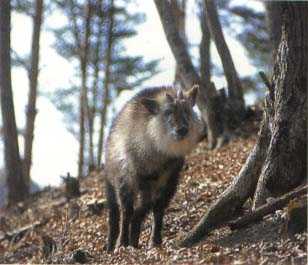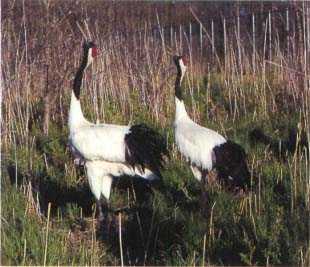| 1. | Natural Environment of Japan |
| 1.1 | Japanese Archipelago |
 Ise-Shima National Park |
Rapid economic development which started in the 1960's has changed the social and economical structure and life style in Japan, particularly in Tokyo and other big cities. Huge industrial complexes have been developed and rapidly urbanized suburban areas.
Still, forest areas cover 67 percent of Japan's total land area and agricultural lands 14 percent. Because of its mountainous topographical nature, a large part of Japan is still decorated with beautiful primitive and secondary forests. Brown bears, black bears, and Japanese deer trot in forests, and golden eagles, cranes and herons glide in blue sky.
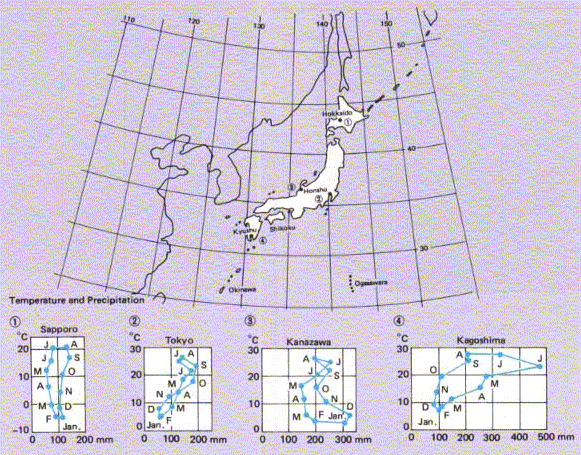
| 1. | Natural Environment of Japan |
| 1.2 | Land Use |
Mountains and hills occupy 70 percent of total land areas, which are mainly covered with forests. Land used for agriculture account for 14 percent of total national land. Thus rural areas, which are illustrated by small population and small industrial activities, still maintain traditional agricultural communities with abundant natural resources.
![]() Transition of Land Use (Unit : Ten thousand ha (%))
Transition of Land Use (Unit : Ten thousand ha (%))
| Year | 1972 | 1992 |
|
1. Agricultural area
Cultivated land |
596(15.8) 573(15.2) |
525(13.9) 516(13.7) |
| 2. Forest | 2,529(67.0) | 2,520(66.7) |
| 3. Waste land | 50( 1.3) | 27( 0.7) |
| 4. Rivers, Lakes&Reservoirs, and Watercourses | 127( 3.4) | 131( 3.5) |
| 5. Roads | 83( 2.2) | 117( 3.1) |
| 6. Built-up area Housing sites | 110( 2.9) 70( 1.9) |
164( 4.3) 99( 2.6) |
| 7. Others | 279( 7.4) | 293( 7.7) |
| Total | 3,774(100.0) | 3,778(100.0) |
| 1. | Natural Environment of Japan |
| 1.3 | Flora |
 Alpine and subalpine Vegetation (Minami Alps National Park) |
Forests vary with the change in temperature and other conditions from south to north, in order of evergreen broad-leaved, deciduous broad-leaved and evergreen coniferous forests. Vertically, from coastal areas to high mountains, a similar pattern of vegetation change can be also observed.
However, a wide area of primitive forests has been altered by human intervention, which in Japan began more than 2,000 years ago. They cut down trees, utilized them as firewood and charcoals, logs for housing and other cultivation and industrial purposes, and altered forest areas into secondary or planted forests, cultivation lands, roads, factories, and housing sites.
The map presented on next page illustrates the degree of human disturbance given to the original vegetation. Areas on the levels 10 and 9 are the areas where the original vegetation has received no artificial effect. Substitutional vegetation, levels 8 and 7, are the forests being affected by human intervention. Areas on the level 1 have totally been lost its original vegetation and changed into built-up area.
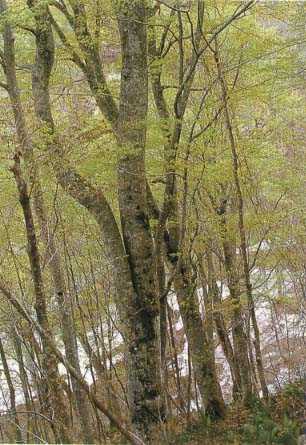 Broad-leaved deciduous forest |
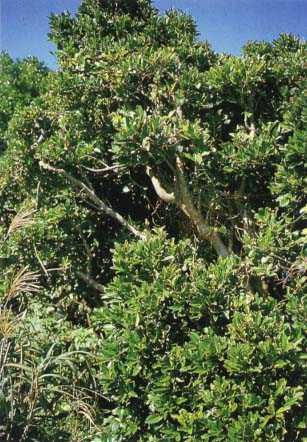 Broad-leaved evergreen forest |
| 1. | Natural Environment of Japan |
| 1.4 | Fauna |
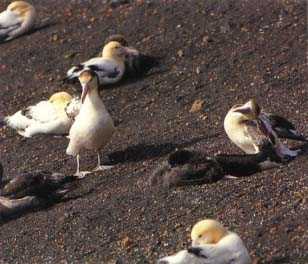 Short-Tailed Albatross (Diomedea albatrus)
|
Another reason for this diversified fauna is the geological formation of the Japanese islands. They were a part of the Eurasian Continent. It is estimated that the Japanese archipelago started gradually separating from the continent in the Neo-Tertiary period (ca. 25 million years ago) and that much of them separated in the Quaternary period (a million years ago). During a rather long period of isolation from the continent, some species have evolved by themselves into unique ones, which are not found even in neighboring countries.
There are many examples of relict and endemic species. With reference to mammals, Iriomote Wild-cat (Mayailurus iriomotensis), Amami Hare (Pentalagus furnessi), Japanese Dormouse (Glirulus japonicus) are some of the examples. Some examples are also seen among bird and amphibian species inhabited in isolated small islands.
With regard to large mammals, a number of Brown bears (Ursus arctos) and Shika deer (Cervus nippon) are observed frequently in Hokkaido, the northern-most of the main Japanese islands, and Black bears (Selenarctos thibetanus), Japanese serows (Capricornis crispus) and Shika deer are seen in forest areas of other islands.
Red-crowned crane (Grus japonensis), one of the most elegant cranes of the world, in Kushiro Shitsugen National Park attracts a number of bird watchers and nature lovers. In addition, Japanese big birds of prey such as Japanese golden eagle (Aquila chrysaetos) and White-tailed sea eagle (Haliaeetus albicilla) can also be observed near their habitats in a migrant season.
Japan has wild-birds species with a very high percentage of migratory ones, i.e. 60 percent of total
bird species in Honshu, the main island, are migratory birds, and 80percent in Hokkaido, the northern-most
main island, are also migratory species.
Ministry of the Environment Government of Japan |
